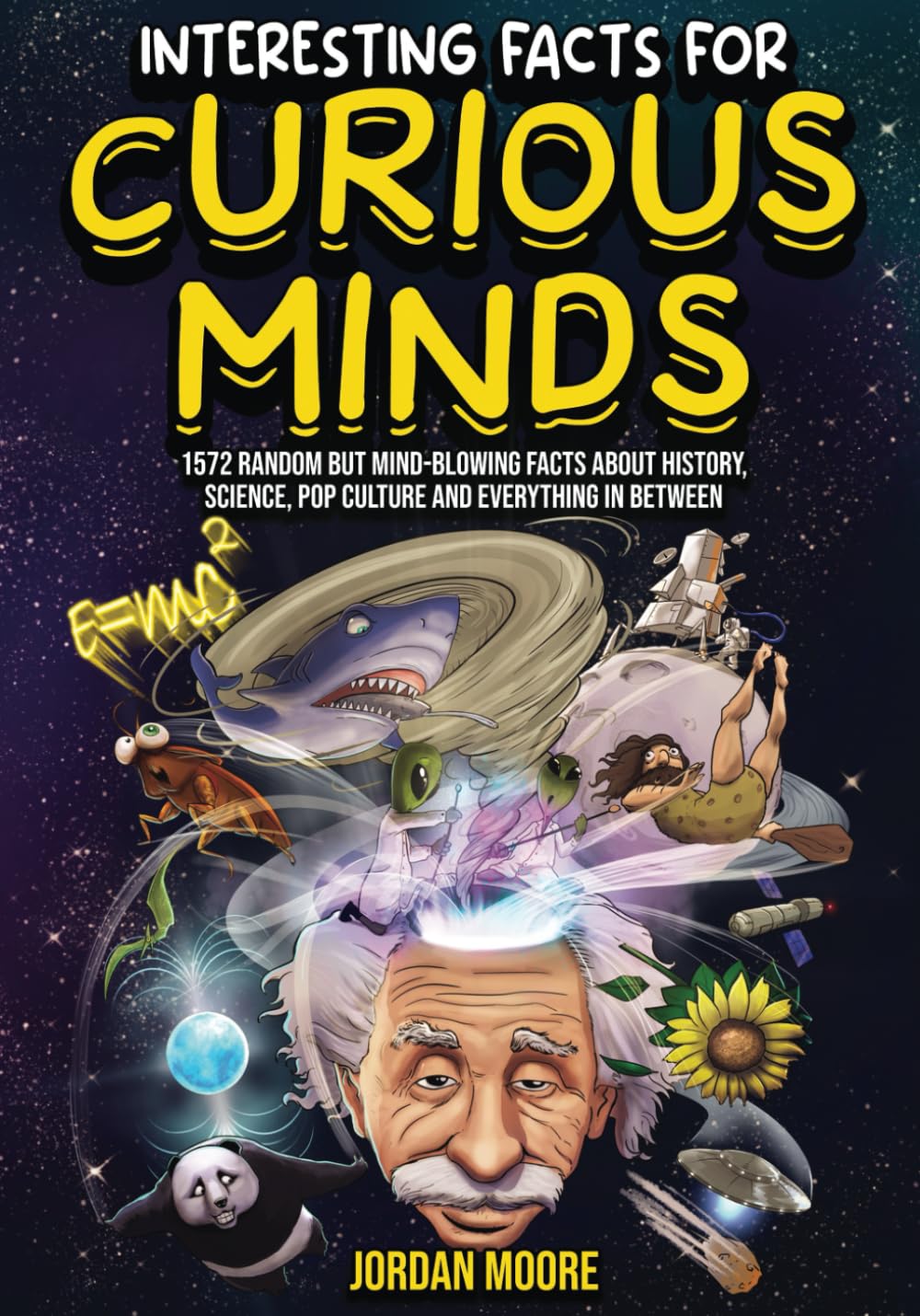
Interesting Facts For Curious Minds: 1572 Random But Mind-Blowing Facts About History, Science, Pop Culture And Everything In Between
Drugs, Legal And Otherwise
byDrugs, legal and otherwise, have long been part of human history, with both beneficial and harmful effects. One such drug is heroin, a substance whose name was coined by the German pharmaceutical company Bayer in the late 1800s. The name derives from the German word “heroisch,” meaning “strong” or “heroic,” reflecting the drug’s initial appeal as a powerful painkiller. While originally marketed for therapeutic use, heroin’s addictive properties became evident, and it was later banned. In contrast, other drugs like Valium, a popular benzodiazepine, were designed with specific therapeutic effects in mind. The name “Valium” is derived from the Latin word “vale,” which translates to “goodnight,” highlighting its intended use as a sedative to help individuals sleep.
Many substances, both legal and illegal, have been used in unique ways throughout history, some of which carry dangerous consequences. Scopolamine, a drug often prescribed to treat motion sickness, has been abused in more sinister ways. In Colombia, for instance, it has been used to render victims unconscious for robbery purposes, with more than 50,000 cases reported. While this drug was initially intended for medicinal use, its ability to cause amnesia and disorientation made it a tool for criminal activity. Such cases underscore the importance of monitoring drug use and the potential for abuse when substances are not carefully regulated. Meanwhile, the global pharmaceutical industry has grown immensely, with its market value reaching $1.27 trillion by the end of 2020, up from just $390 billion in 2001, showing the rising demand for medications, both beneficial and harmful.
The use of hallucinogens in religious and cultural practices has been documented for centuries, with various substances playing a central role in rituals. For example, American Indian tribes used psilocybin mushrooms in spiritual ceremonies, and the Aztecs referred to a particular species of mushroom as the “divine mushroom.” These mushrooms contain compounds that can cause vivid hallucinations, making them valuable in spiritual practices where altered states of consciousness are sought. In a more casual setting, even common kitchen items like nutmeg have been found to contain psychoactive properties. Nutmeg contains myristicin, a compound that can produce hallucinogenic effects if consumed in large enough quantities. However, it’s important to note that most individuals would need to consume an excessive amount to experience any form of high, making it a relatively mild psychoactive substance.
As the world’s understanding of drugs evolves, so too do the laws surrounding their use. The Netherlands is often mistakenly credited as the first country to legalize recreational cannabis use, though Uruguay actually became the first in 2013 to pass such legislation. The move was a significant milestone in global drug policy, influencing other countries to reconsider their own stances on cannabis. However, some drugs have continued to be heavily regulated, such as tobacco. In 1995, the U.S. Food and Drug Administration (FDA) declared cigarettes to be “drug delivery devices,” but the Supreme Court overturned this decision in 2000, ruling that the FDA lacked the authority to regulate tobacco as a drug. This legal battle reflects the ongoing debate about how substances should be classified and regulated.
While some drugs are created with the intention of improving health, others have resulted in unintended harmful effects. Rimonabant, a prescription drug used to treat severe obesity, was introduced in 2006 but was pulled from the market two years later after it caused severe side effects in patients. Reports showed that 10% of users experienced depression, and 1% had suicidal thoughts, highlighting the risks associated with certain pharmaceuticals. The pharmaceutical industry, dominated by companies like Johnson & Johnson, continues to generate substantial revenue, with J&J being the largest pharmaceutical company globally by market capitalization, valued at $473.06 billion in 2021. This underscores the powerful role that pharmaceutical companies play in both public health and the economy, as well as the responsibility they bear to ensure the safety of their products.
Historically, some drugs have been marketed for uses that were later deemed inappropriate due to their addictive properties. Heroin, for example, was marketed in the U.S. as a cough suppressant from 1895 until 1924. Although it was effective in treating coughs, the addictive nature of heroin led Congress to recognize its dangers, and it was subsequently banned. This early misstep in drug regulation serves as a reminder of the importance of thoroughly understanding the potential risks of new substances before they are widely distributed. Similarly, morphine, an opioid named after the Greek god Morpheus, was used for pain management but also led to widespread addiction, contributing to the ongoing opioid crisis that has affected many communities worldwide.
The CIA’s involvement in drug experimentation is another dark chapter in the history of drugs, legal and otherwise. From 1953 to 1973, the agency conducted the MKUltra project, dosing unknowing subjects with LSD in experiments designed to explore mind control. The project resulted in several deaths and numerous ethical violations, revealing the dangers of uncontrolled drug experimentation. This disturbing episode demonstrates the powerful effects drugs can have on the human mind, as well as the lengths to which governments and organizations may go in the name of experimentation. Despite these dark moments in history, the development and regulation of drugs continue to evolve, with modern science striving to balance their therapeutic benefits against their potential for abuse. As we continue to learn more about the effects of various substances, responsible regulation remains essential to safeguarding public health.

